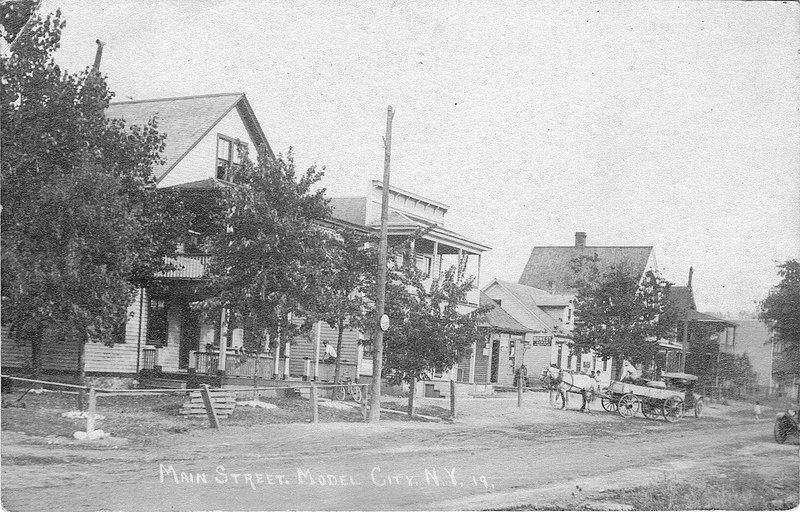Model City (pre-WWII)
William T. Love wanted to create hydroelectricity and a utopian community in Lewiston, NY. He left devastation behind instead.
In 1892, a mysterious man named William T. Love came to Niagara Falls. Depending on who you ask, he had either a plan or a scheme to generate hydroelectricity and create a utopian community called Model City.
Love’s specific idea was to build an artificial waterfall in the Niagara Gorge and a canal that would connect the upper and lower Niagara River. Water flowing into the river from the waterfall would generate hydroelectricity via a power plant in Model City.
Love envisioned Model City “rising out of the orchards and fields of Lewiston, where the Niagara River flows into Lake Ontario north of Niagara Falls.” He “foresaw perfect streets, perfect schools, perfect factories, perfect sanitation--in short, a model city. In their deeds, landowners had to swear they would never sell alcohol.”
Model City would have everything its residents needed, including stores, schools, churches, small businesses, and residential homes. Love estimated that two million people would both live and work in this industrial, environmentally friendly city.
In 1894, the first shovels broke ground on the canal and dozens of houses and structures were built in Model City. But after a year, progress began to slow for a few reasons. First, financial instability in the country caused investors to back out of Love’s plan by 1897. Only one mile of the canal had been built.
Second, Nikola Tesla successfully generated hydroelectricity in 1895, which rendered Love’s canal useless. The businesses and industries that had come to Model City could now use electricity generated directly from Niagara Falls.
In the late 1890s, Love ran out of money and left town. Rumor was that he joined the Alaska gold rush.
For fifty years, people swam and fished on the abandoned canal. And then Hooker Chemical Company started dumping toxic waste in the canal. “It was ultimately filled in and redeveloped, only to have the contamination seep out into people's yards and basements. What started as an idea for utopia, wound up one [of] the worst environmental disasters our nation has ever seen.” It’s known, of course, as Love Canal.
Meanwhile, “Model City to the north remained a sleepy hamlet.” In the 1940s, the U.S. government briefly used it for a TNT factory and then for radioactive waste storage from the Manhattan Project.
Today, you can still find Model City on maps of Niagara County and even get there by GPS. In Lewiston, there’s Model City Road and Model City Post Office. A few homes and businesses line a now rural road. Visitors can walk the grounds at nearby Our Lady of Fatima Shrine, home to a domed rotunda, beautiful gardens, and over 130 life-size marble and bronze statues.
Hope L. Russell, Ph.D.


